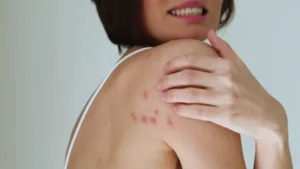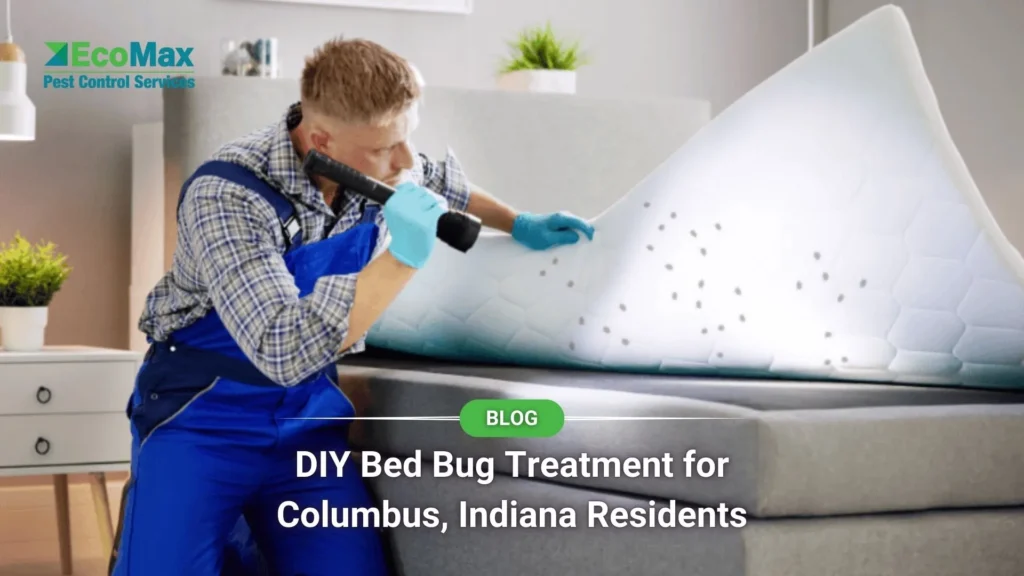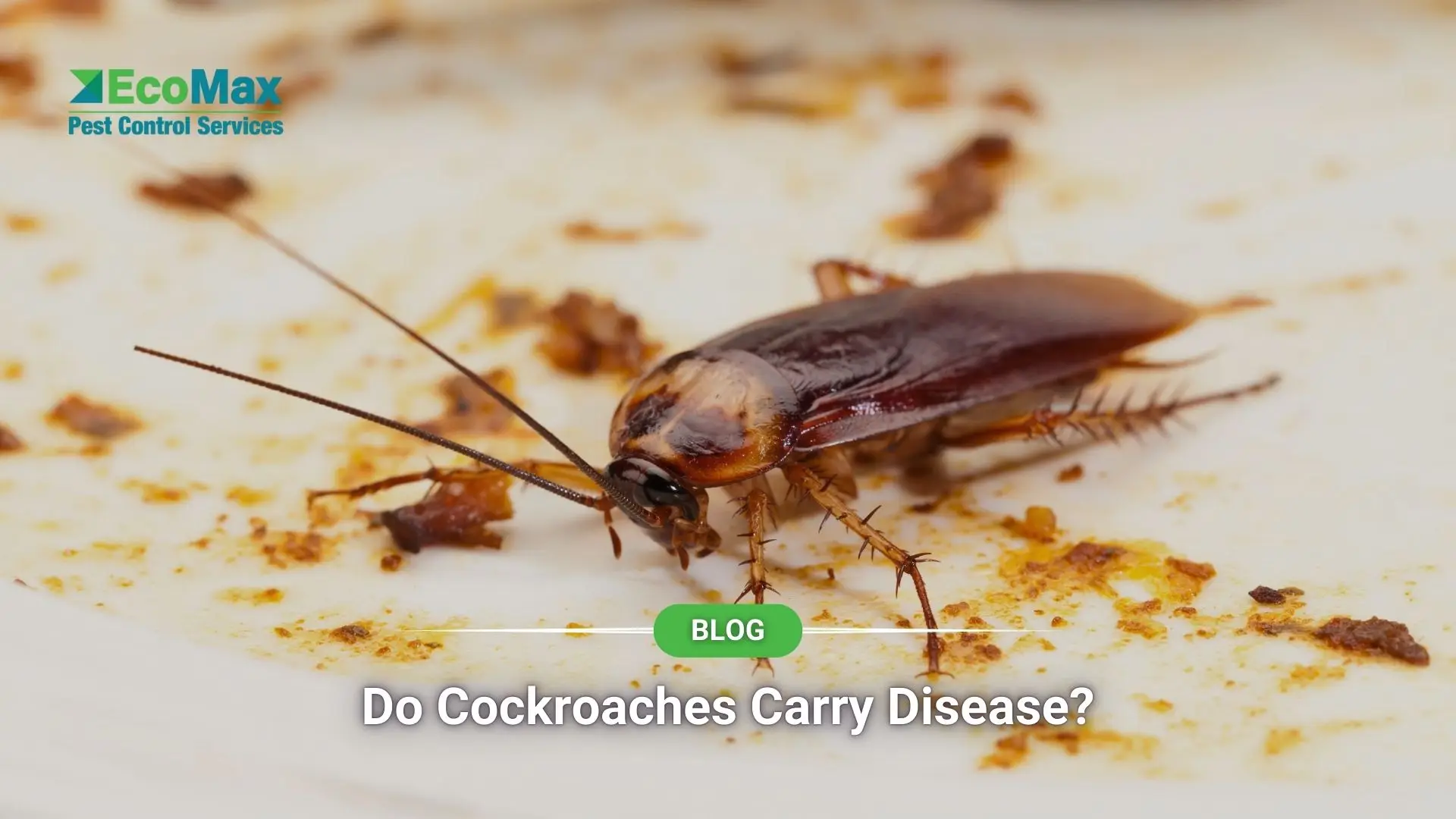Bed bugs are a growing concern across the United States, with one in five Americans reporting encounters with these pests either personally or through someone they know (PestWorld.org). In Indiana, the problem is particularly severe, with Indianapolis ranking as the 8th most bed bug-infested city in the nation. Given Columbus’s proximity to Indianapolis, residents must remain vigilant to prevent infestations. While professional extermination services are available, many homeowners prefer DIY bed bug treatment methods.
Why Bed Bugs Are a Major Problem in Columbus, Indiana
Bed bugs are resilient pests that can thrive in various environments, making them a persistent issue for homeowners. Their ability to hide in tiny crevices and survive without feeding for months makes them particularly challenging to eliminate. With Indianapolis being a hotspot for bed bug infestations, nearby cities like Columbus are also at risk. Early detection and proactive measures are crucial to preventing a full-blown infestation.
Signs of a Bed Bug Infestation

Before diving into treatments, it’s essential to identify the signs of a bed bug infestation:
Small blood stains on sheets or mattresses.
Dark spots (bed bug excrement) on furniture or walls.
Itchy, red bites on the skin, often in a line or cluster.
A musty odor in heavily infested areas.
If you notice any of these signs, it’s time to take action with bed bug treatment at home.
Effective DIY Bed Bug Treatments
High-Temperature Washing and Drying
Heat is one of the most effective ways to kill bed bugs and their eggs. According to the National Pest Management Association (NPMA), bed bugs and their eggs die at temperatures above 120°F.
Collect all infested bedding, clothing, and linens.
Wash them in hot water (at least 120°F) for 30 minutes.
Dry them on the highest heat setting for an additional 30 minutes.
Pro Tip: “Use a laundry bag to prevent bed bugs from spreading to other areas during transport.”
Steam Cleaning for Deep Infestations
Steam cleaning is a powerful method for treating infested areas. The high temperature of steam (at least 160°F) kills bed bugs and their eggs on contact.
Use a steamer on mattresses, furniture, and baseboards.
Ensure the steam reaches a temperature of at least 160°F.
Note: “Avoid using steam on electrical outlets or sensitive surfaces.”
Vacuuming to Remove Bed Bugs
Regular vacuuming can significantly reduce bed bug populations. A study by Ohio State University found that vacuuming removes up to 90% of bed bugs from infested areas.
Vacuum carpets, mattresses, and furniture thoroughly.
Use a vacuum with a HEPA filter to trap tiny particles.
Immediately seal and dispose of the vacuum bag in an outdoor trash bin to prevent re-infestation.
Diatomaceous Earth: A Natural Killer
Diatomaceous earth is a natural powder that dehydrates and kills bed bugs. It’s a popular DIY bed bug treatment because it’s non-toxic and effective over time.
Sprinkle food-grade diatomaceous earth around bed frames, baseboards, and other infested areas.
Leave it undisturbed for several days before vacuuming it up.
Caution: “While effective, it may take time to see results.”
Essential Oils for Repellent Purposes
Some essential oils, like tea tree oil and lavender oil, are believed to repel bed bugs. While not scientifically proven, many homeowners use them as part of their bed bug home treatment plan.
Mix a few drops with water and spray the solution on infested areas.
Important: “Essential oils are not a standalone solution and should be used as a supplementary measure.”
Decluttering and Isolation Techniques
Reducing clutter minimizes hiding spots for bed bugs. According to the Environmental Protection Agency (EPA), clutter provides ideal hiding places for bed bugs, making them harder to eliminate.
Isolate your bed by moving it away from walls and ensuring bedding doesn’t touch the floor.
Use bed bug interceptors under bed legs to trap climbing pests.
Cold Treatment for Small Items
Extreme cold can also kill bed bugs. Research shows that bed bugs exposed to temperatures of 0°F (-18°C) for at least four days will die.
Place small infested items in sealed plastic bags.
Leave them in a freezer set to 0°F (-18°C) for at least four days.
Silica Gel for Dehydration
Crushed silica gel can be used similarly to diatomaceous earth. It’s a desiccant that dehydrates and kills bed bugs.
Sprinkle the crushed gel in infested areas.
Warning:” Keep it out of reach of children and pets.”
Mattress Encasements for Long-Term Protection
Encasing your mattress and box spring can trap existing bugs and prevent new ones from entering.
Leave the encasements on for at least a year, as bed bugs can survive for extended periods without feeding.
Preventive Measures to Avoid Bed Bug Infestations

Regular Inspection Periodically examine your home, especially sleeping areas, for signs of bed bugs. Early detection can prevent a minor issue from becoming a major infestation.
Careful Travel Practices Inspect luggage and clothing after traveling to prevent bringing bed bugs into your home. Bed bugs are excellent hitchhikers and can easily be transported via personal belongings.
Second-Hand Items Thoroughly inspect and clean used furniture or clothing before bringing them into your house. Bed bugs can hide in the crevices of furniture and the folds of clothing.
Use Protective Covers Utilize mattress and box spring encasements to eliminate hiding spots for bed bugs. The light color of the encasement makes bed bugs easier to see. Be sure to purchase a high-quality encasement that will resist tearing and check it regularly for holes.
Reduce Clutter A cluttered home provides more places for bed bugs to hide and makes locating and treating them harder. Keeping your home tidy can reduce potential hiding spots.
Be Cautious with Shared Laundry Facilities Transport items to be washed in plastic bags (if you have an active infestation, use a new bag for the journey home). Remove items from the dryer directly into a bag and fold them at home. A dryer on high heat can kill bed bugs.
When to Call a Professional
If DIY bed bug treatment methods prove ineffective or the infestation persists, it’s time to consult a professional pest control service. Professionals have access to advanced treatments and equipment that can effectively eliminate bed bugs.
For residents in Columbus, Franklin, Seymour, Edinburgh, North Vernon, Shelbyville, Nashville, Greensburg, Greenwood, and surrounding areas, Eco-Max Pest Control Services is a trusted local provider.
Conclusion
Addressing a bed bug infestation requires diligence, persistence, and a proactive approach. By implementing these bed bug home treatment solutions and preventive measures, Columbus, Indiana residents can effectively manage and eliminate bed bugs from their homes. Remember, early detection and consistent application of these methods are key to success.


